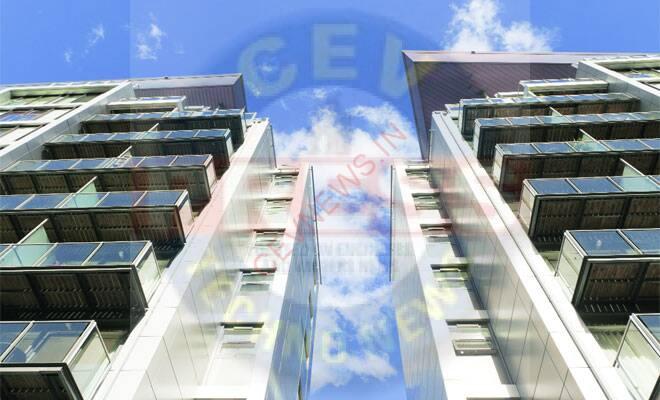Saturday Brain Storming Thought (125) 07/08/2021
COMPILED BY ER. AVINASH KULKARNI
ASSET-BACKED SECURITIES (ABS)
Asset-backed securities (ABSs) are financial securities backed by income-generating assets such as credit card receivables, home equity loans, student loans, and auto loans
Mortgaged-backed securities and collateralized debt obligations can be considered ABS
Keynotes on ABS
1) Asset-backed securities are created by pooling together non-mortgage assets such as student loans
2) ABS benefits sellers because they can be removed from the balance sheet, allowing sellers to acquire additional funding
3) ABS have payment risks
4) ABS also have credit risk, where they sell senior-subordinate structures (called credit teaching) to deal with the risk
5) valuing ABS can be done with various methods, including zero-volatility and option-adjusted spreads

Credit Tranche
It refers to a system of releasing loan funds in phases that the International Monetary Fund (IMF) uses to govern its lending activities with member countries
Zero-volatility
It refers to the constant spread that will make the price of a security equal to the present value of its cash flows added to the yield at each point on the spit rate treasury curve where a cash flow is received
Option-adjusted spread
It is the measurement of the spread of a fixed-income security rate and the risk-free rate
Types of ABS
1) Home equity ABS
It is similar to mortgages, where investors need to review borrowers credit rating
2) Auto loan ABS
Cash flows of an auto loan ABS include monthly interest, principal payment, and prepayment
3) Credit card receivable ABS
They don’t have scheduled payment amounts, while new loans and charges can be added to the composition of the pool
ABS Notes
These are bonds or notes backed by financial assets
Securitization
It is the process of creating asset-backed securities by transferring assets from the issuing company to a bankruptcy-remote entity
An ABS is a financial security whose value and income payments are derived from and collateralized by a specific pool of underlying asset
Financial Security
A fungible, negotiable instrument representing financial value and includes
1) debentures
2) bonds
3) stocks
4) notes
5) certificates of deposit
Underlying Assets
Underlying assets are the financial assets upon which a derivatives price is based
1) receivables
2) lease
3) royalties
4) loan
5) credit card debt
6) etc

Structure of Asset-Backed Securities
1) Class A
1) High credit rating
2) Normally AAA Rating
3) Low yield due to higher rating
2) Class B
1) low rating compared to class A
2) high yield due to lower rating
3) Class C
1) lowest or no rating
2) usually retained by issuer or sponsor
3) highest return
Principal payment structures of ABS
1) Pro-rata structure
The payment ratio for each class of security is pre-determined and the principal is paid accordingly
2) Sequential pay structure
First, high-class securities are paid, then the lower classes are paid the amount of principal
Types of ABS according to the principal payment method
1) Fully Amortising Debt
Both interest and principal are included in installments
2) Revolving Debt
In the first person only, interest is paid and in the final period, the principal is paid

Key features of Ideal Asset-backed instrument
1) capable of being offered to the public or private placement
2) permit free or restricted transferability
3) permit issuance of pass-through or pay through securities
4) should not constitute a debt of SPV or originator
5) capable of being classified as senior or subordinate
6) capable of being issued in bearer or registered in holders name
Asset-backed parties in securitization
1) originators
2) special purpose vehicles
3) services
4) credit enhances
5) underwriters
6) dealers
Asset-backed originators
1) creates a pool of future receivables
2) writes off those assets from the balance sheet
3) sells those assets to SPV
4) receives funds as consideration
5) uses these funds to create further assets
Special Purpose Vehicle
It is a legal entity created to fulfill narrow or specific or temporary objects
Characteristics of SPV
1) a legal entity
2) narrow, specific or temporary purpose
3) isolate firm from risk
4) usually a limited company or limited partnership
5) may be owned by two or more entities
Uses of SPV
1) securitization
2) risk-sharing
3) finance
4) asset transfer
5) financial engineering
6) regulatory reasons
7) property investing

Underwriter
The person or institution that agrees to sell a minimum number of securities for the commission is called an underwriter
1) usually an investment bank
2) serves as an intermediary in SPV and investors
3) advise SPVs in the issue of securities
4) cover the risk of issuance
Benefits of investing in ABS
1) attractive yields
2) high credit quality
3) diversity and investment diversification
4) predictable cash flow
5) reduced event risk
![]()
![]()
Compiled by:-
Avinash Kulkarni

Chartered Engineer
Govt Regd Valuer
IBBI Regd Valuer





